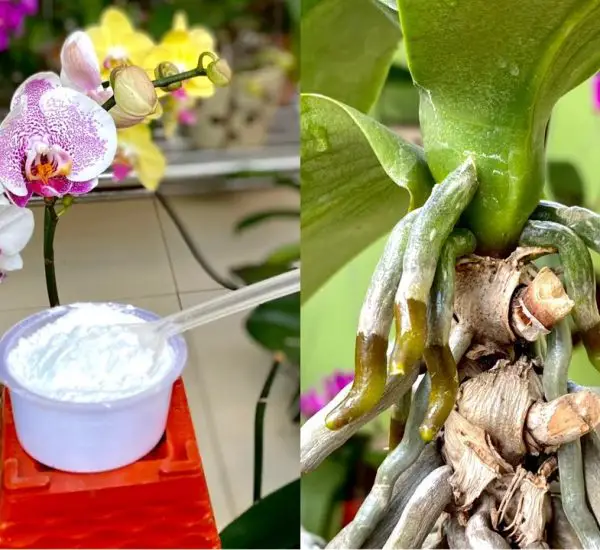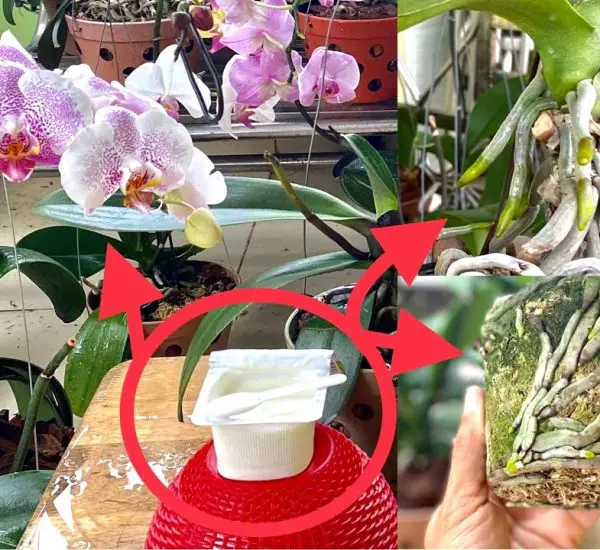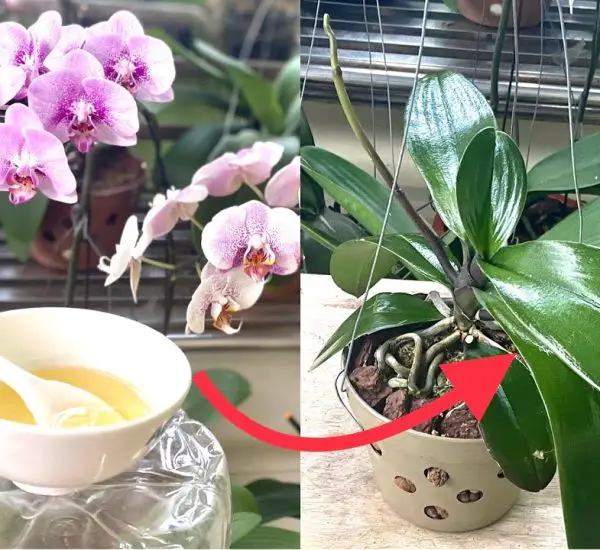1. Conditioning for New Environment
When you bring a new orchid home, it’s crucial to acclimate it to its new surroundings. For the first 7 days, refrain from watering the plant to allow the growing medium to dry out. This period helps the orchid adjust to the change. Additionally, using a small clove of garlic in a liter of water, with its antioxidant and antibacterial properties, ensures a protective shield for the leaves, preventing fungal growth.
2. Moss Removal and Root Protection
After the initial conditioning period, proceed with repotting the orchid. To effectively remove moss from the roots and protect against potential rot, soak the entire orchid root in the garlic-infused water for 30 minutes. This simple step not only aids in cleaning the roots but also fosters a healthier foundation for the orchid. The method ensures a swift removal of old potting material without compromising the root system.
3. Pruning and Potting Technique
Begin the repotting process by eliminating any damaged roots, dried parts of flower stems, and adjacent dry leaves near the base. Utilize a plastic bottle filled with pine bark as the new growing medium. Arrange the pine bark around the pot, using small sticks for support to enhance ventilation. This potting technique fosters an environment conducive to quick root development. Adding a touch of moss to the pot maintains optimal moisture for the tropical orchid.
4. Gradual Stabilization and Growth
After repotting, place the orchid in a cool location for 5 to 7 days, allowing the plant to gradually stabilize. Following this period, reintroduce light slowly to prevent stress on the orchid. Implementing a mist spray routine during the initial days post-repotting helps prevent leaf wilting. With this method, orchids not only maintain their health but also experience rapid growth, ensuring green and vibrant leaves.
By following these easy and effective steps, your repotted orchids will thrive, exhibiting robust growth and sustained health. For more insights into orchid care, explore various methods shared on the channel to find the most suitable approach for your plants.




